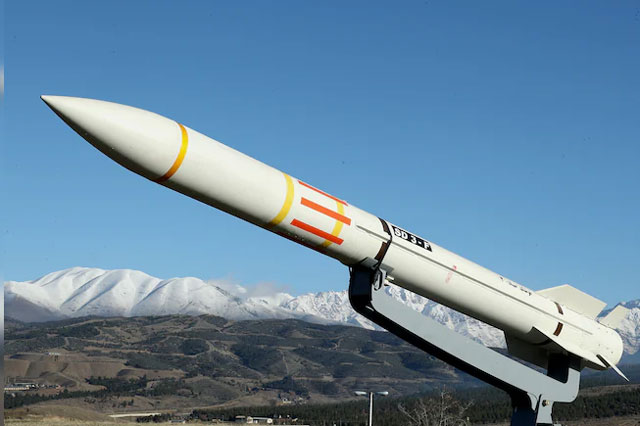Daijiworld Media Network – Tehran
Tehran, Sep 26: Iran is believed to have carried out an undeclared missile test at its Imam Khomeini Spaceport in Semnan province, even as the country continues to reel from its recent 12-day war with Israel. Satellite images analysed by the Associated Press revealed fresh scorch marks at a launch pad, indicating a possible solid-fuel missile launch last week.
Though Tehran has not officially confirmed the test, a member of Iran’s parliament, Mohsen Zanganeh, claimed on state television that the country had successfully tested an “advanced intercontinental-range missile.” He provided no evidence to back his assertion, fuelling further speculation about the launch.

“We have neither abandoned enrichment nor backed down from our missile positions. The night before last, we tested one of the country’s most advanced missiles, which had not been trialed before — and that test was successful,” Zanganeh said, portraying the event as a show of strength amid ongoing regional tensions.
Satellite imagery captured before September 18 showed the circular launch pad painted in the colours of the Iranian flag — blue ringed with red, white, and green. Subsequent images, however, revealed heavy scorch marks similar to those seen after earlier rocket launches, suggesting the use of a solid-fuel missile.
Fabian Hinz, a missile expert at the International Institute for Strategic Studies, said the scale of scorching indicated a solid-fuel missile launch. “The burn marks suggest the use of a blast deflector to channel the flames, typical of such launches,” he noted.
The alleged test comes as Iran works to repair missile sites damaged by Israeli strikes during the June conflict. Analysts believe the move underscores Tehran’s intent to bolster its missile capabilities despite mounting sanctions and the looming reimposition of United Nations restrictions tied to its nuclear program.
Behnam Ben Taleblu, an analyst at the Washington-based Foundation for Defense of Democracies, observed, “Israel’s successes in the 12-day war reinforced for Tehran the importance of developing more ballistic missiles and better versions of them. Consider this part of Tehran’s efforts to build back better, and as quickly as possible.”
Intercontinental ballistic missiles (ICBMs) generally have ranges exceeding 5,500 kilometres, far beyond the 2,000-kilometre limit reportedly set by Iran’s Supreme Leader Ayatollah Ali Khamenei. If true, such a development could bring Europe and even parts of the US mainland within reach.
Despite the lawmaker’s claims, there is no confirmation from US Central Command or international space agencies of any satellite being placed into orbit. Analysts suggest that the launch may have failed or was intended as a symbolic message to the West that Iran will press ahead with its missile program regardless of international pressure.
The incident has reignited concerns about Iran’s missile ambitions at a time of heightened regional instability, with experts warning that even ambiguous tests risk further escalating tensions across the Middle East.